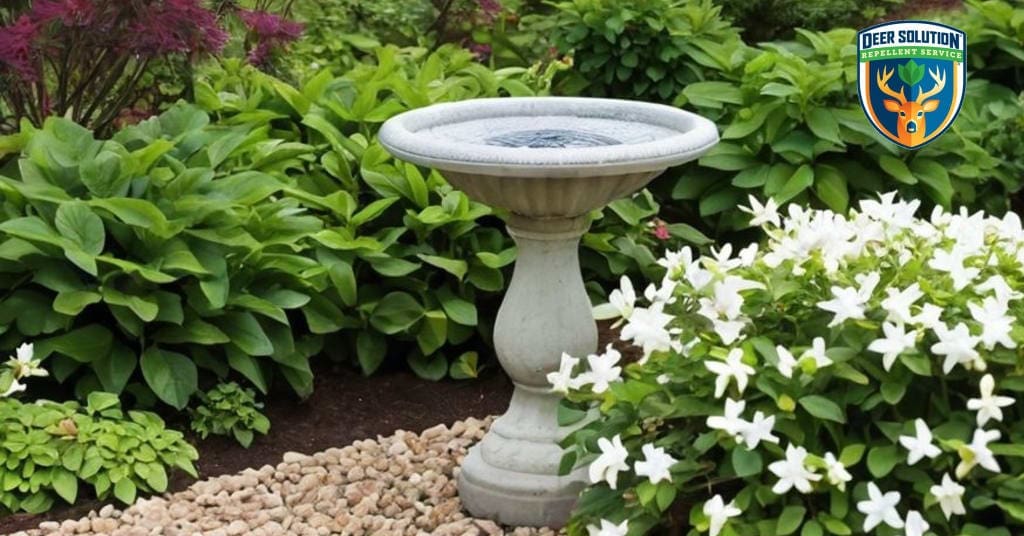Peegee Hydrangeas (Hydrangea paniculata ‘Grandiflora’) are beloved for their large, conical blooms that change color from white to pink as they mature. These resilient, easy-to-care-for shrubs are popular in gardens, adding charm and structure to landscapes. However, under certain conditions, deer may occasionally browse on Peegee Hydrangeas. In this article, we’ll delve into why deer might target these hydrangeas, the best ways to protect them, and how to integrate them into a beautiful, sustainable garden.
What Makes Peegee Hydrangeas Vulnerable to Deer?
While Peegee Hydrangeas aren’t typically a deer’s first choice, their vulnerability increases when food is scarce. Deer are opportunistic feeders, and during harsh winters or droughts, they may sample plants they would normally avoid. Young Peegee Hydrangeas, with their soft, new growth in spring, are particularly tempting for deer. Fresh, tender shoots are easy to chew and provide much-needed nutrients when other food is limited.
Additionally, seasonal changes can influence a plant’s appeal. In early spring, Peegee Hydrangeas produce delicate new leaves, which may draw deer to them. As the season progresses and the plant matures, its foliage becomes tougher, making it less appetizing. However, in late fall and winter, when natural food sources are depleted, deer may return to feed on whatever is left accessible in your garden, including mature Peegee Hydrangeas.
Using Companion Planting to Safeguard Peegee Hydrangeas
One of the best ways to protect Peegee Hydrangeas is through companion planting, where you surround them with plants that deer find unappealing. Plants with strong aromas or rough textures work particularly well as natural deterrents. Consider planting herbs like Russian sage, lavender, and thyme nearby. These aromatic plants not only enhance the overall look of your garden but also discourage deer from venturing closer to your hydrangeas.
In addition to herbs, ornamental grasses like miscanthus and switchgrass can provide both texture and protection. Their tall, dense clumps make it more difficult for deer to navigate your garden, while adding visual interest and movement to the landscape. By strategically planting deer-resistant companions around your Peegee Hydrangeas, you create a natural barrier that keeps deer at bay while enriching the biodiversity of your garden.
Designing Your Garden to Deter Deer
Garden layout plays an important role in reducing the likelihood of deer browsing. Placing Peegee Hydrangeas in less accessible areas, such as close to your home or within enclosed garden sections, can make it harder for deer to reach them. Planting them in raised beds not only elevates the plants but also makes them more difficult for deer to browse. Raised beds can also improve soil drainage and provide a better growing environment for hydrangeas.
Another effective strategy is multi-layer planting, where taller, deer-resistant plants like boxwood or junipers are positioned around the hydrangeas. This approach creates a physical and visual barrier, shielding the more vulnerable Peegee Hydrangeas from deer. Multi-layer planting also adds depth and structure to your garden, making it more visually dynamic while protecting your prized plants.
Adapting to Seasonal Vulnerabilities
The seasonal behavior of deer significantly impacts their feeding patterns, which means your Peegee Hydrangeas are most at risk during certain times of the year. In spring, as the hydrangeas produce tender new leaves, deer are more likely to be attracted to the fresh growth. By late summer and early fall, as the foliage matures and becomes tougher, the plants are generally safer from browsing.
However, in late fall and winter, when deer’s natural food sources become scarce, your garden may once again become a target. During these periods, using natural repellents like garlic sprays or cinnamon oil can help deter deer without harming your plants. Keeping an eye on deer activity and being proactive in your defense measures, particularly in the early spring and late fall, will go a long way in protecting your Peegee Hydrangeas.
Peegee Hydrangeas and Their Ecological Contributions
Peegee Hydrangeas are more than just beautiful additions to your garden—they play a vital role in supporting the ecosystem. These shrubs attract pollinators like bees and butterflies, which are essential for a thriving, biodiverse environment. The large, colorful blooms provide a rich nectar source for these beneficial insects, helping to maintain the overall health of your garden.
In addition, the strong, deep root systems of Peegee Hydrangeas help to stabilize soil, reducing erosion and improving soil health by promoting aeration. Protecting these plants from deer not only preserves their aesthetic value but also contributes to the ecological balance of your garden, supporting both plant and wildlife health.
Taking Advantage of Microclimates for Deer Resistance
Microclimates—small areas within your garden that have slightly different conditions from the surrounding area—can be leveraged to protect Peegee Hydrangeas. For example, areas near stone walls, dense hedges, or large trees can create sheltered spots where hydrangeas are less accessible to deer. These naturally protected areas provide a barrier that deer are less likely to cross, while also creating optimal growing conditions for the plants.
By positioning Peegee Hydrangeas in these microclimates, you not only reduce the risk of deer browsing but also give the plants the ideal environment to thrive. Combining microclimate placement with companion planting or other design elements can further enhance the resilience of your garden against deer damage.
Why Professional Support Can Make a Difference
While companion planting and strategic garden design offer excellent protection, sometimes the added peace of mind that comes from professional help is invaluable. Deer Solution specializes in eco-friendly, all-natural repellent services designed to meet the specific needs of your garden. Our certified experts apply treatments regularly during peak deer browsing seasons, ensuring ongoing protection without harming the environment, your plants, or your family.
With professional services tailored to your landscape’s unique characteristics, you can rest assured that your Peegee Hydrangeas and other vulnerable plants will remain healthy and beautiful throughout the year. Whether you experience frequent deer visits or simply want an extra layer of defense, Deer Solution offers sustainable, effective protection for your garden.
Conclusion: Keeping Peegee Hydrangeas Safe and Beautiful
Protecting Peegee Hydrangeas from deer requires a thoughtful combination of companion planting, seasonal awareness, and smart garden design. By understanding how deer interact with your garden throughout the year, you can take proactive steps to reduce the risk of browsing. Whether you use natural repellents, leverage microclimates, or enlist professional help, these strategies will ensure that your hydrangeas stay healthy and vibrant. With the right approach, you can enjoy the beauty of Peegee Hydrangeas while maintaining a balanced, deer-resistant garden ecosystem.












